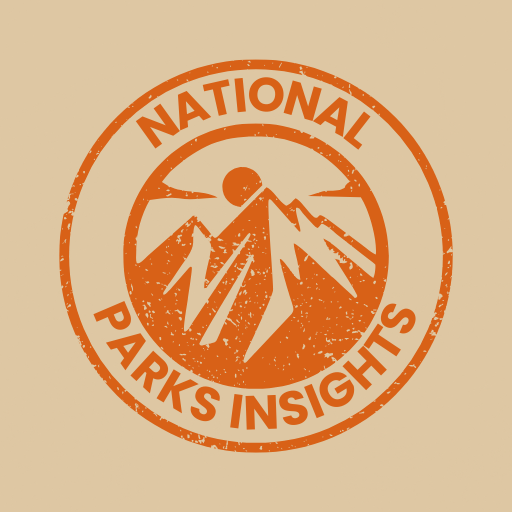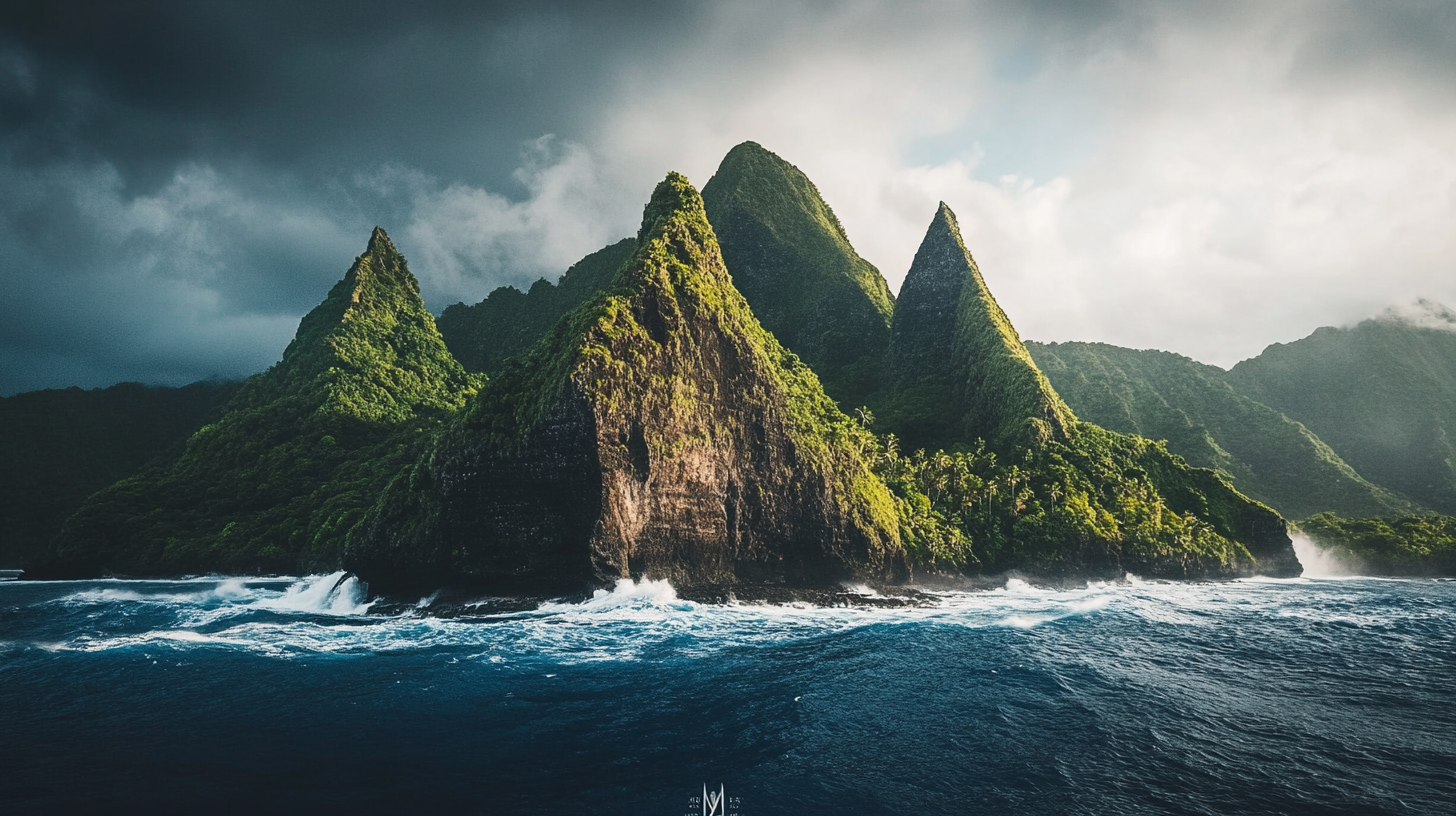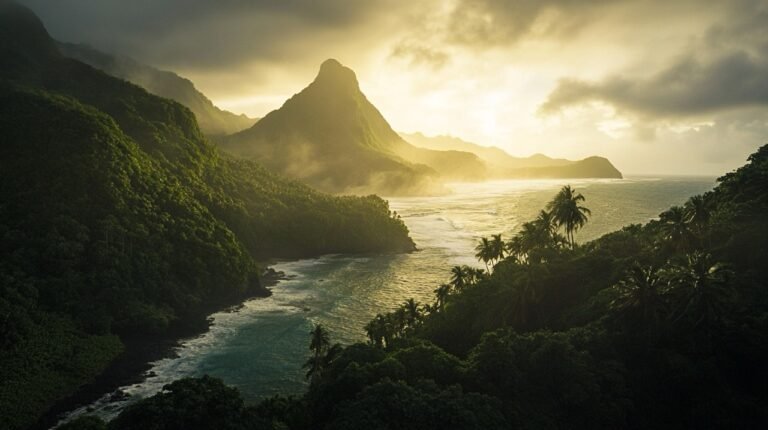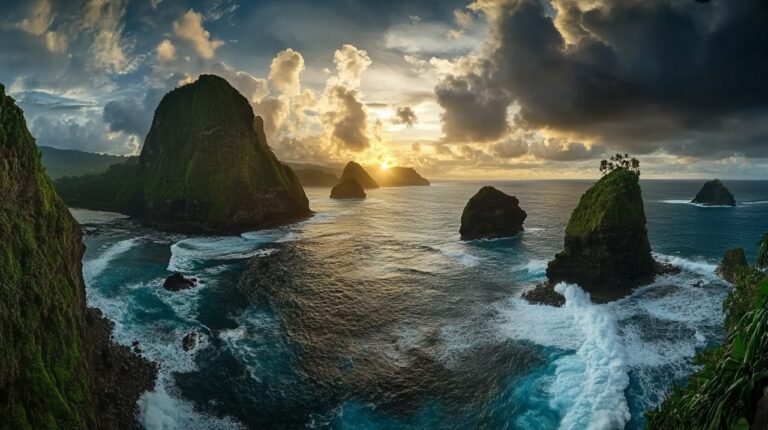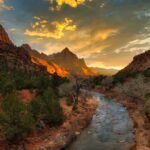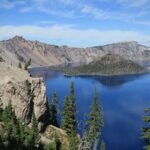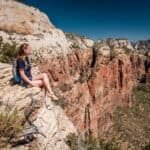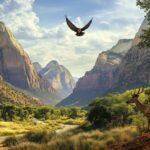Exploring American Samoa National Park Map
Location and Visitor Information
Tucked away in the South Pacific, this little slice of heaven, the National Park of American Samoa, is a haven for anyone who digs nature. The heart of everything is in Pago Pago, AS, right at the cozy MHJ Building on the 2nd Floor, 96799 to be exact. Got a question or need a hand? Just ring them up at 684-633-7082 ext. 22. They’ve got maps and guides galore over at the National Park Service.
Getting there? First, you’ll touch down at Pago Pago International Airport on the island of Tutuila. After that, hop on a smaller plane to the islands of Ta’ū or Ofu. Travel options aren’t endless, so make sure to plan ahead. For all the deets on getting there, you’ll want to check how to get to American Samoa National Park along with the American Samoa National Park travel guide.
Unique Hiking Opportunities
Adventure waits on the trails of American Samoa’s national park. Whether you’re in it for a gentle stroll by the waves or want to sweat it up on a rainforest hike, they’ve got it covered. With stunning views and maybe a curious bird or ancient ruins peeking through the leaves, there’s more than enough to keep you busy. For all the hiking ins and outs, head over to the National Park Service.
Here’s a quick rundown of trails you’re gonna love:
| Trail Name | Difficulty Level | Description |
|---|---|---|
| Pola Island Trail | Easy | A chill walk with jaw-dropping views of the coast and where seabirds hang out. |
| Mt. Alava Trail | Moderate | A 7-mile trek with killer views over Pago Pago Harbor. |
| Oge Beach Trail | Hard | A tough 4-mile hike through a jungle that ends at a hidden beach. |
Need more scoop on hiking must-haves? Hit up our guide on American Samoa National Park visitor information.
Have a blast at the National Park of American Samoa, and remember to keep it clean and play by the park rules.
Trail Options and Difficulty
Trail Diversity and Conditions
Ever feel like you’ve got a bit of the Indiana Jones spirit in you? Whether you’re a pro hiker or more of a “what’s the scenic route to the grocery store?” type, the National Park of American Samoa has something that’ll rock your socks off. This place is like a treasure chest of trails. Fun fact: you can literally beach walk one minute and be Tarzan-ing through rainforests the next.
Here’s the skinny on what’s out there:
| Trail Name | Difficulty | Length |
|---|---|---|
| Pola Island Trail | Easy | 0.3 miles |
| Mt. ‘Alava Trail | Moderate | 7 miles |
| Ta’ū Island Ridge Hike | Difficult | 5.8 miles |
| Oge Beach Walk | Easy | 1 mile |
| Ofu Island Shoreline Trail | Moderate | 3 miles |
For all things trails, hit up the American Samoa National Park attractions page.
Essential Hiking Tips
Visiting the National Park of American Samoa is like catching a ride on the awesome meter, but a little prep goes a long way. Here’s your cheat sheet to Mountain Dew your adventure right:
1. Just Peek at the Weather: Tropical weather’s like that friend who changes plans last minute. Go early morning for cooler vibes – trust me, you’ll be happy you did.
2. Gear Up: With trails going from sandy chill to rocky thrill, your trusty kicks (a.k.a. good shoes) are your best bud. Toss in hiking poles if it’s been raining—they’re like the Swiss Army knife for hikers.
3. Don’t Forget H2O, Bro: It’s not called a rainforest for nothing. Keep yourself hydrated with plenty of agua and don’t skip those snacks unless hangry is your jam.
4. Be a Nature Buddy: Mother Nature doesn’t like litterbugs. Stick to the paths and keep the wilderness looking fab.
5. Know Your Neighbors: The park’s rich cultural roots go hand in hand with respecting local traditions. Scope out the cultural respect guide so you’re in the know before you go.
6. Wildlife’s Watching You: Animals here aren’t exactly Instagram influencers. Keep your distance like they’re celebs, and don’t feed ’em’ll appreciate it.
7. Check Your Paperwork: Some trails have a velvet rope vibe—permits needed. Swing by the visitor center to see what’s up.
8. Battle the Elements: Think sun hats, sunscreen, and breezy clothes for that sun-kissed feel. Maybe a little bug spray too, just in case those mozzies want a taste.
Rock these tips, and your hike will be a straight-up legendary tale. For side quests (or just more advice on managing curly hair), jump over to tips for straightening curly hair.
Get yourself all set and soak in the jaw-dropping beauty of American Samoa!
Best Time to Visit
Planning your American Samoa National Park trip? Timing is key to having a blast on your nature getaway. Get a handle on the weather and prime travel time, and you’ll be set to have a great experience without any glitches.
Climate Considerations
American Samoa’s got that tropical vibe—hot and humid year-round. So, pack the essentials: loads of water, sunscreen, sunglasses, and a hat. Oh, and don’t forget your insect repellent. Going through the rainforest can have you swatting at bugs more than you’d like (National Park Service).
The weather can throw you curveballs. One minute it’s sunny, next, you’re drenched from a quick shower. The trails can turn into slip-and-slide zones, especially if you’re on rocky or forested ones. Morning hikes are your best bet to avoid the midday blast furnace (National Park Service).
| Climate Considerations | Details |
|---|---|
| Average Temperature | 80°F to 85°F |
| Humidity | High, like the inside of a sauna |
| Rainfall | Frequent showers, more so in the wet season |
Ideal Travel Season
Want the ultimate hiking adventure? Mark your calendar for the dry spell stretching from May to October. Trails are easier to navigate, and the heat’s a bit less intense. Just keep in mind, even during the dry season, a rain shower can make a surprise entrance (National Park Service).
| Season | Months | Weather Conditions |
|---|---|---|
| Dry Season | May to October | Cooler and drier. Sneaky rain possible |
| Wet Season | November to April | Hot, stickier than syrup, and rain-heavy |
The dry season’s your ticket to soaking in the park’s jaw-dropping rainforests, some of the best in U.S. territories. Plus, you get to snoop around the To’aga archaeological site in the Ofu area, revealing tales of human history going back 3000 years. Now that’s a trip back in time.
Got questions about hiking trails during your trip? Swing by our essential hiking tips section. Read up on getting ready for your adventure at the American Samoa National Park visitor info page.
With these weather tips and travel seasons under your belt, you’re on your way to planning an awesome trip to American Samoa National Park. Happy exploring!
Island Exploration
American Samoa National Park dishes out a one-of-a-kind getaway across its trio of islands: Tutuila, Ta’ū, and Ofu. Each has its own bit of magic and perfect pit stops for those who love nature.
Tutuila, Ta’ū, and Ofu
Tutuila:
Tutuila is the big boss, the most reachable of the islands, and it throws out the welcome mat to the American Samoa National Park. You’ve got lush green jungles, soaring volcanoes, and places oozing with old-school vibes. A trip straight into Tutuila’s park is as pretty as a picture and a real cultural eye-opener.
Ta’ū:
This island’s all about the wild side with its rugged face and high-up ridges. Ta’ū is a park playground, where unspoiled forests meet you with breathtaking scenes. There’s some serious history here too, with old sites that whisper the tales of the Samoan ancestors.
Ofu:
Ofu is the place to be if you’re into jaw-droppin’ coral reefs, stretching over a cool 350 acres and pegged as top-of-the-line in American Samoa (National Geographic). The beaches are drop-dead gorgeous, perfect for chillin’ or snorkeling like a pro. Flights over here ain’t exactly like catching an Uber, so you’re in for a quiet, chill vibe once you make it (Mikah Meyer).
| Island | Highlights | Getting There |
|---|---|---|
| Tutuila | Forests, volcanic views, cultural hotspots | Easiest to access |
| Ta’ū | Untamed landscapes, ancient relics | Medium difficulty |
| Ofu | Stunning reefs, white sandy beaches | Plane’s a rare bird, weekly flights |
Underwater Adventures
Roughly 4,000 acres of this park lie beneath the waves, making American Samoa National Park an aquarium on steroids for folks who dig snorkelin’ and divin’ (National Park Service). Head to islands like Ofu, Olosega, and Ta’ū for coral reefs fringed with crystal-clear waters and a crowd-pleasin’ variety of marine residents (National Park Service).
| Fun Stuff | What’s the Haps | Where to Dive In |
|---|---|---|
| Snorkeling | Peek at colorful reefs, meet fishy friends | Ofu, Olosega, Ta’ū |
| Diving | Crystal-clear diving, fab visibility | Tutuila, Ofu |
For a smooth trip, peep our American Samoa National Park Travel Guide and get the lowdown on How to Get to American Samoa National Park. And if you’re up for some campfire vibes, read up on American Samoa National Park Camping.
Whether you’re hitting the trails or plunging into the ocean, American Samoa National Park’s got natural beauty and cultural gems all wrapped up. Dive into an experience that’s equal parts awe and wonder!
Visitor Center and Access
Get ready for an adventure at American Samoa National Park! Here’s the lowdown on the visitor center and how to get around, so your trip is nothing short of amazing.
Facility Details
First stop: the National Park Visitor Center in Pago Pago on Tutuila. It’s your go-to place for all the help you need. From Monday to Friday, 8:00 a.m. to 4:30 p.m., you’ll find helpful rangers ready to arm you with maps and safety tips. You might want to skip weekends and federal holidays—they’re closed then!
| Facility | Details |
|---|---|
| Location | Pago Pago, Tutuila |
| Hours | Weekdays: 8:00 a.m. – 4:30 p.m. |
| Closed | Weekends, Federal Holidays |
| Services | Visitor help, maps, safety tips |
Want the full scoop on the visitor center? Check out our American Samoa National Park visitor info page.
Transportation Tips
Getting to the park? It’s a bit of a trek, but nothing a smart traveler like you can’t handle. Your journey kicks off at Pago Pago International Airport on Tutuila. From there, get set to hop on smaller flights to islands like Ta’ū and Ofu. Just a head’s up, travel options are kinda sparse, so plan your journey in advance (National Park Service).
Here’s how to get started:
- Pago Pago International Airport: Your starting point.
- Smaller Flights: Available for those jaunts to Ta’ū and Ofu.
- Advance Planning: Book flights and places to crash well before you go.
For more tips on flipping through the travel pages, peep our guide on how to get to American Samoa National Park.
Don’t forget to check out American Samoa National Park accommodation options to make sure you rest easy and wake up ready to soak in the park’s jaw-dropping beauty.
Smart planning will let you squeeze every drop of joy out of your time in this awe-inspiring spot. Happy adventuring, and get ready to dive into all the natural wonders American Samoa has to offer!
Cultural Respect and Park Guidelines
Local Customs and Etiquette
Cruising through American Samoa National Park isn’t just about soaking in nature—it’s also a chance to experience local customs that make the place special. The park is planted right within Samoan villages, so get ready to meet native folks on your adventure. A few tips for blending in:
- Knock First: Before strolling through village areas, get the green light from the village chiefs.
- Dress the Part: Cover up a bit; it’s a sign of respect for their ways.
- Stay Hydrated: The sun can be brutal—carry plenty of water to keep on trekking.
- Block the Rays: Sunscreen, hats, and comfy clothes are your best buddies under the blazing sun.
Wanna know more? Hit up the American Samoa National Park visitor information page for all the deets.
Environmental Conservation
We all want to keep American Samoa National Park as stunning as it is, right? Here’s how to make sure it stays postcard-perfect:
- Leave No Mess Behind: Pack out what you bring in. Keep your impact on nature as light as a feather.
- Wildlife Respect: Don’t mess with the local critters. They’re best left to munch on their natural menu.
- Trail Loyalty: Stick to the trails, it’s your best bet for safety and helps protect the plants and animals.
- Permit Patrol: Some spots need a pass or might be off-limits. Check beforehand (permits and access restrictions).
- Hiking Smart: Bring the right gear, maybe a map, and a sense of adventure—know where you’re headed to make it back safe and sound.
For more scoop on travel tips, check out our American Samoa National Park travel guide. It’s packed with useful info for the savvy traveler.
